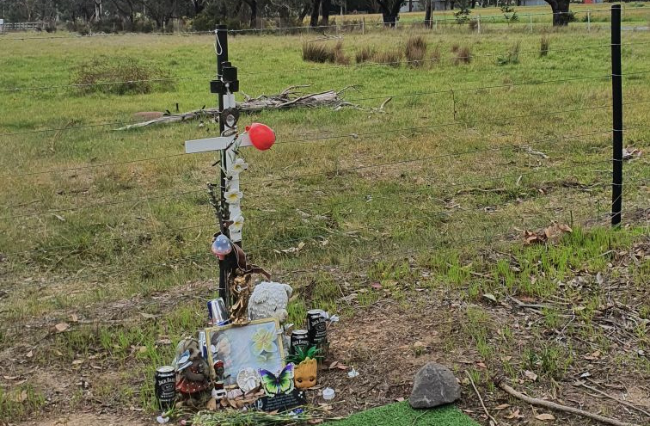The Sunraysia Daily, a cornerstone of regional news in Mildura for the bester part of the last century, is just one regional news platform that has been grappling with financial pressure that intensified during the pandemic. The paper, once a daily, was forced to scale back to four issues per week.
Sunraysia Daily has been able to adapt to the new climate, but other outlets have not been as fortunate. Across Australia, many regional and rural news outlets are grappling with financial pressure. Data from think tank Public Interest Journalism Initiative (PIJI) over the past five years shows a sharp decline in local news, with 67 percent of closures and 91 percent of service reductions occurring across regional Australia. In 2019, Australia was home to 435 regional newspapers. However, the changing landscape has contributed to the rise of “news deserts”, areas where access to reliable and quality local news has become scarce. Without significant change, more outlets may see their financial struggles worsen.
Advertising: The lifeblood of local news.
Advertising revenue has significantly declined over the years. Traditionally, revenue came from classified advertising (e.g., employment, real estate, vehicles). Now, the shift to digital platforms, such as Seek and Gumtree, is contributing to the downturn. For example, classified ad revenue dropped from $2 billion in 2001 to just $200 million in 2016.
However, Dr Alison McAdam, a regional and rural journalism researcher from Deakin University, says traditional revenue streams like advertising remain the primary source of income for local media.
“I think it’s important to recognise that there’s some old revenue streams that are still existing and that often get overlooked, and they’re actually the things that are keeping news in local areas now …. This is basically advertising,” she tells upstart.
“There’s been a decline in advertising revenue in this space, but it is still the main thing propping up and supporting … news in rural and regional areas [financially], and that’s advertising from other local businesses.”
Despite the loss of classified advertising, McAdam believes there are still opportunities for regional news outlets to sustain themselves. Births, deaths, and marriages, as well as other public notices, remain relevant for smaller communities and can still generate revenue.
Moreover, display ads from local businesses continue to be valuable sources of income. But Sunraysia Daily editor Alistair Finlay says news outlets face challenges in adapting to the digital landscape.
“You can try and boost your revenue through online advertising, which is just really an extension of display advertising, which you wrap around your editorial content,” he says.
“[However], the battle is getting people off of social media sites and onto your website … where you make money.”
McAdam says government advertising is an important “silent subsidy”. During critical periods like the COVID-19 pandemic, government-funded advertisements about health messaging, road closures, and other public notices became an essential revenue stream for local newspapers. Unlike direct government grants, which periodically provide support packages to news outlets, government advertising provides a more subtle and “ongoing” form of financial support without the need for flashy subsidies.
“It’s up to us to lobby the government and highlight that regular government advertising in smaller news outlets is a really good support mechanism,” Dr McAdam says.
Is it too much to ask readers to pay for news?
The subscription model is another revenue stream many outlets are adopting. Paywalls are put in place to block viewers from seeing content until they purchase a subscription. There are three types of paywalls, a hard paywall, which prevents any access before paying, a soft paywall, which allows some free content, and a metered paywall, which permits access to a set number of articles.
A 2020 study looked at the traffic on eight different journalistic platforms from Norway and Denmark, for 52 weeks before and after introducing a subscription model. It found that hard paywalls have a more immediate negative impact than soft paywalls. Regardless, traffic decreased across all levels. While subscription services provide a new source of income, the study stresses that it also challenges civic function, because people are less likely to read content they must pay for.
McAdam says that subscription-based news may not be sufficient income in regional towns, even if people were willing to subscribe to them.
“You’re looking at towns with 3,000, 10,000 people, so that’s not a lot. Even if you got every single person to subscribe, it’s still not going to be enough revenue,” she says. “There have to be other models.”
Is help on the way?
The ailing regional news sector is partly reliant on government grants and advertising spend. However, to make local news sustainable, more comprehensive government intervention may be required.
Previous support packages included the $15 million directed by the Labor government towards regional newspapers in 2022. There have also been injections of government funding for specific emergencies like subsidies to offset rising printing costs.
McAdam describes funds from the Australian government’s news media bargaining code as a “complex” policy, that never provided “huge” returns for regional media outlets before Meta pulled out of the deal this year.
“A lot of that money went to some of the bigger players, like News Corp or Australian community media,” she says.
“But they also axed dozens of local news outlets at the same time they were getting some money.”
Where direct government funding does exist, Dr McAdam acknowledges the “tricky” pathway to support journalism without sacrificing impartial reporting on government. Ultimately, though, Dr McAdam says the government is navigating the nuances of the market and does not have the “heavy-handedness” to expect good coverage in exchange for funding.
“I think we’re in a pretty safe democratic space where government subsidies can work without crossing that line of influence,” she says.
Philanthropy: Much needed, mostly absent.
Philanthropic contributions could be a similar source of revenue for outlets that is not tied to readership. Donations from grassroots initiatives or grants from large charitable foundations could support newsrooms that have otherwise struggled from declining advertising revenue.
Dr Leon Gettler, a seasoned journalist and communication expert, says Australia “very much” needs a charitable foundation for journalism, like the Knight Foundation, which provides grants to news outlets as part of their project to “protect democracy” in the US by keeping communities “informed and engaged”. The non-profit foundation has committed millions to local journalism in the States, but it has no equivalent in Australia. However, Dr Gettler says establishing one is “possible”.
“Local, regional papers would have to get together and approach relevant people to set up foundations to help them,” he says. “So, it would have to come from them, but there’s no big philanthropy push in Australia for journalism.”
According to PIJI CEO Anna Draffin, the reason is partly due to the way Australians view journalism.
“The problem in Australia is that news isn’t yet recognised as a charitable purpose,” she says.
The future of regional news.
By combining traditional revenue streams like advertising and subscription services, with newer approaches such as government support and philanthropy, Dr McAdam says regional news outlets can adapt to today’s media landscape. For some news outlets, diversification of their business model may involve including cookbooks, lifestyle magazines, or hosting events, she says. But ultimately, if news outlets can differentiate themselves from others by providing local, niche content, they can retain readers.
Sunraysia Daily editor Alistair Finlay has seen firsthand how the masthead has managed to adapt to the new climate —partly by scaling back from daily editions to four issues per week. Other outlets, he says, are still exploring ways to stay afloat.
“They’re literally trying anything to survive,” he says. “And ultimately, they’re doing it for two reasons. One is to make money because it’s a business, but the other reason is if they don’t do it, the papers fall over, and communities don’t get news.”
Despite these growing “news deserts”, Dr McAdam remains hopeful that regional and rural news outlets can sustain themselves. However, she acknowledges that the previous abundance of regional outlets is unlikely to return.
“It will find an equilibrium, and we just have to hope that equilibrium gets back to a space where people living anywhere in Australia can access important news and information about their local area,” she says.
“That would be an ideal outcome for the long term.”
Article:
Amelia Pozdzik is a second-year Bachelor of Media and Communication (Sports Media & Marketing) student at La Trobe University. You can follow her on Twitter @Amelia_Pozdzik
Lewis Cain-McAliece is a second-year Bachelor of Media and Communications (Journalism) student at La Trobe University. You can follow him on Twitter @LewisCM4769
Awab Elbashir is a second-year Bachelor of Media and Communications student at La Trobe University. You can follow him on Twitter @awab_elb
Photo: Newsagency by Gary Sauer-Thompson is available HERE and is used under a Creative Commons Licence. This image has not been modified.






